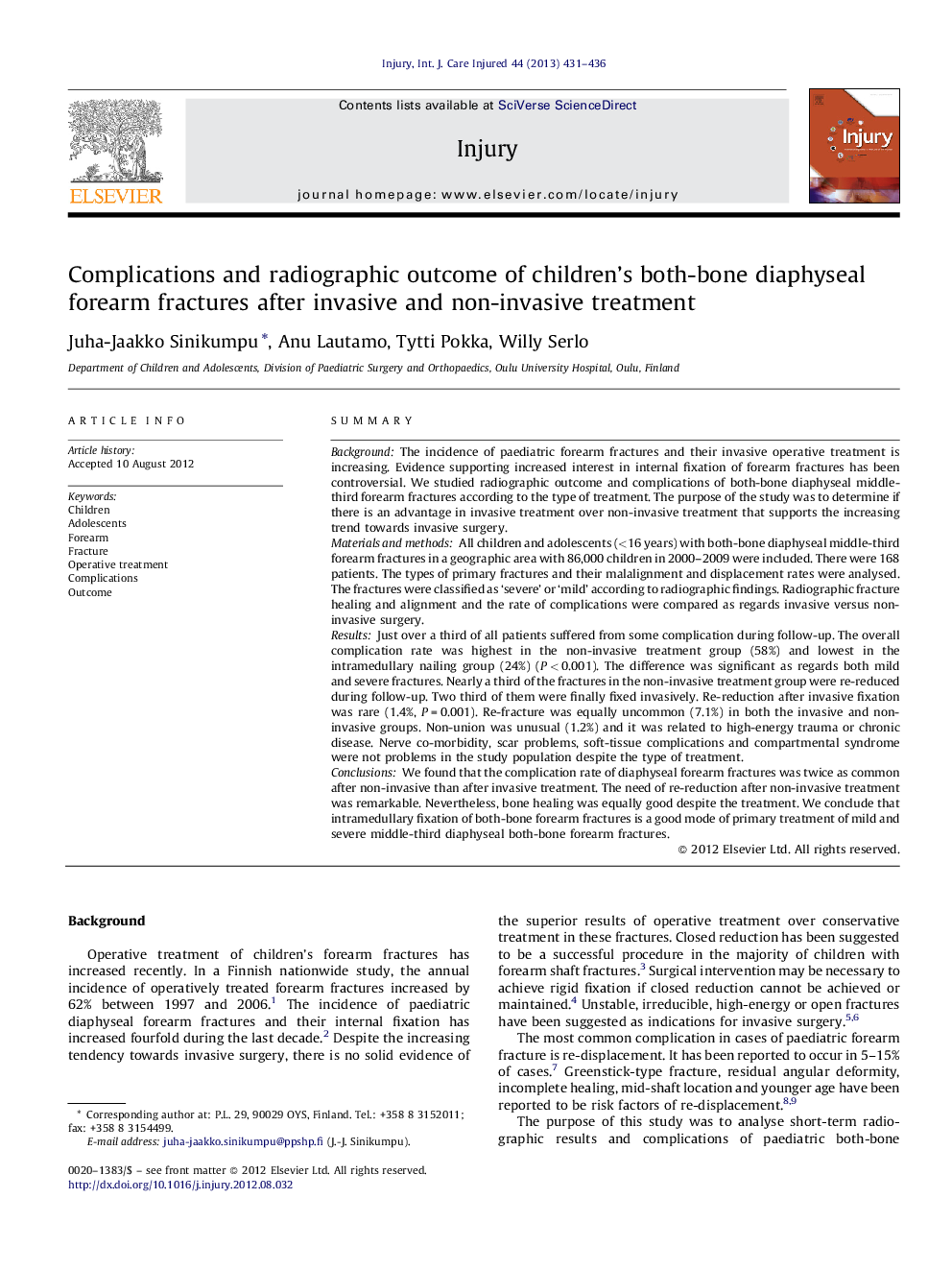| کد مقاله | کد نشریه | سال انتشار | مقاله انگلیسی | نسخه تمام متن |
|---|---|---|---|---|
| 3239438 | 1206006 | 2013 | 6 صفحه PDF | دانلود رایگان |

SummaryBackgroundThe incidence of paediatric forearm fractures and their invasive operative treatment is increasing. Evidence supporting increased interest in internal fixation of forearm fractures has been controversial. We studied radiographic outcome and complications of both-bone diaphyseal middle-third forearm fractures according to the type of treatment. The purpose of the study was to determine if there is an advantage in invasive treatment over non-invasive treatment that supports the increasing trend towards invasive surgery.Materials and methodsAll children and adolescents (<16 years) with both-bone diaphyseal middle-third forearm fractures in a geographic area with 86,000 children in 2000–2009 were included. There were 168 patients. The types of primary fractures and their malalignment and displacement rates were analysed. The fractures were classified as ‘severe’ or ‘mild’ according to radiographic findings. Radiographic fracture healing and alignment and the rate of complications were compared as regards invasive versus non-invasive surgery.ResultsJust over a third of all patients suffered from some complication during follow-up. The overall complication rate was highest in the non-invasive treatment group (58%) and lowest in the intramedullary nailing group (24%) (P < 0.001). The difference was significant as regards both mild and severe fractures. Nearly a third of the fractures in the non-invasive treatment group were re-reduced during follow-up. Two third of them were finally fixed invasively. Re-reduction after invasive fixation was rare (1.4%, P = 0.001). Re-fracture was equally uncommon (7.1%) in both the invasive and non-invasive groups. Non-union was unusual (1.2%) and it was related to high-energy trauma or chronic disease. Nerve co-morbidity, scar problems, soft-tissue complications and compartmental syndrome were not problems in the study population despite the type of treatment.ConclusionsWe found that the complication rate of diaphyseal forearm fractures was twice as common after non-invasive than after invasive treatment. The need of re-reduction after non-invasive treatment was remarkable. Nevertheless, bone healing was equally good despite the treatment. We conclude that intramedullary fixation of both-bone forearm fractures is a good mode of primary treatment of mild and severe middle-third diaphyseal both-bone forearm fractures.
Journal: Injury - Volume 44, Issue 4, April 2013, Pages 431–436